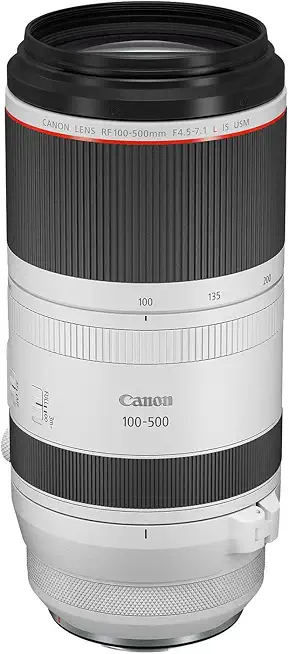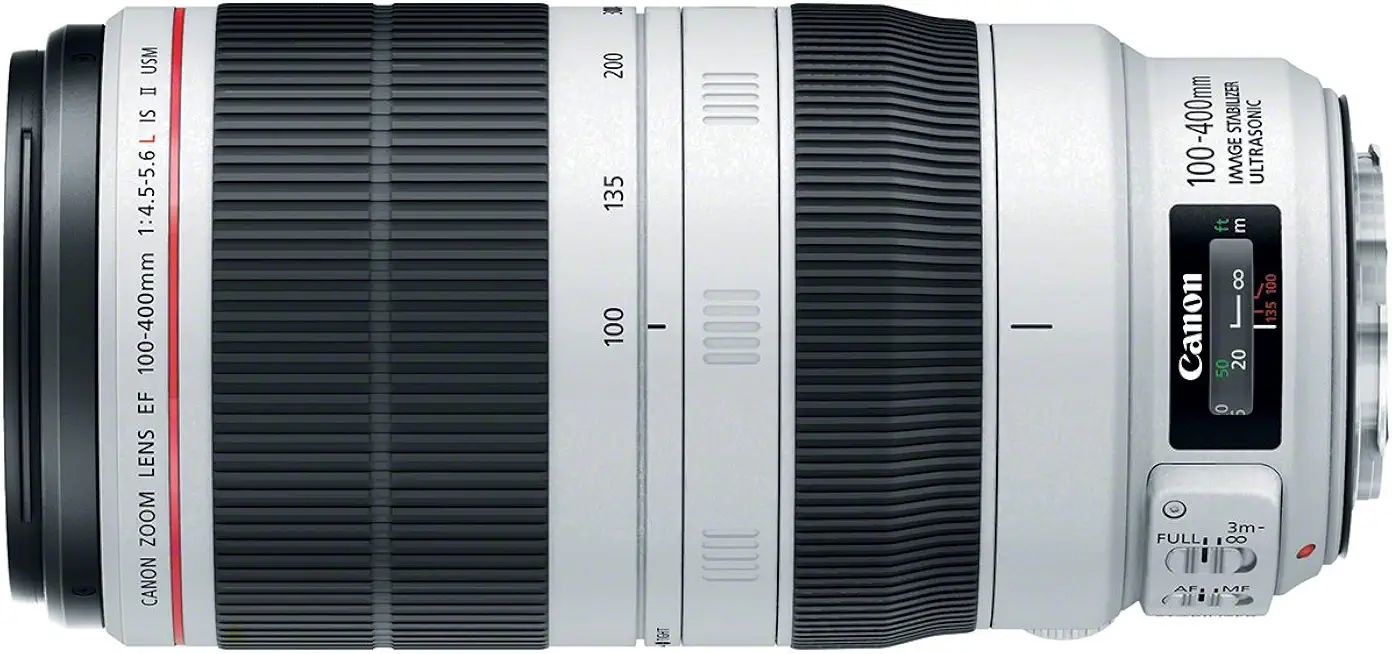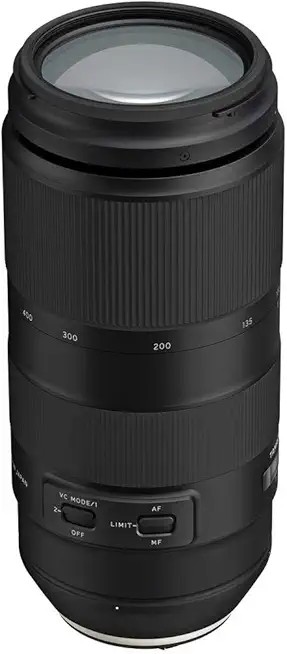
You’re tired of hauling giant glass and still missing distant action, right? The Canon RF 100-500 mm f/4.5-7.1 L promises 100–500mm reach without prime bulk.
I’ve field-tested this lens in real shoots and pitted it against a couple of close rivals. You’ll see examples from wildlife, sports and aviation scenarios.
It’s ideal if you shoot wildlife, action sports or aviation with an EOS R body and want a lighter bag, fewer missed shots and easier travel. Top payoffs are excellent optics, effective five-stop image stabilization and fast, near-silent Dual Nano USM autofocus that keeps subjects locked.
But there’s a headline compromise: the maximum aperture narrows to f/7.1 at 500mm, so low-light shots and background separation suffer. That trade-off matters more than you’d expect in certain situations.
I won’t spoil it here, but I found one workflow tweak that can often drastically improve your photos with this lens in many real situations. For that surprising trick and when to use it, keep reading

Canon RF 100-500 mm f/4.5-7.1 L
Professional-grade super-telephoto zoom delivering exceptional sharpness, fast autofocus and reliable image stabilization. Weather-sealed, robust construction and surprisingly compact handling make it perfect for wildlife, sports and travel photographers.
Check PriceThe Numbers You Need
| Spec | Value |
|---|---|
| Model | Canon RF 100-500mm f/4.5-7.1 L IS USM |
| Mount | Canon RF |
| Focal length | 100–500 mm |
| Maximum aperture | f/4.5–7.1 |
| Aperture blades | 9 (rounded) |
| Optical construction | 20 elements in 14 groups (1 Super UD, 6 UD) |
| Image stabilization | Up to 5 stops (CIPA, at 500mm); 3 IS modes (standard, panning, exposure-only) |
| Autofocus drive | Dual Nano USM |
| Minimum focus distance | 0.9 m (at 100mm); 1.2 m (at 500mm) |
| Maximum magnification | 0.33× (at 500mm) |
| Filter thread | 77 mm |
| Dimensions | ≈207.6 × 93.8 mm (retracted); ≈297.6 × 93.8 mm (extended) |
| Weight | 1,370 g (without tripod collar); 1,530 g (with tripod collar) |
| Weather sealing | L-series dust- and weather-resistant construction |
| Included accessories | Lens Cap E-77 II; Lens Hood ET-83F (WIII); Lens Case/Pouch LZ1328; Tripod Mount Ring F (WIII) |
How It’s Built
The Canon RF 100-500 mm f/4.5-7.1 L feels built like something meant to be used hard. It’s mainly L-series magnesium alloy with high-grade polycarbonate panels and an RF metal mount. In my testing the fit and finish were tight and reassuring.
This lens has an extending barrel that changes length as you zoom, and a removable tripod collar for when you need longer support. The barrel design keeps the center of gravity steady, so handheld shooting stays comfortable. For a beginner that means less strain and easier tracking of fast subjects.
Front and rear elements have a fluorine layer and the glass uses Air Sphere Coating, and there’s a heat-shield treatment too. After using this lens I noticed less flare, easier cleaning, and steadier performance in hot days. That’s big for simple, reliable results out in the field.
What I liked most was the solid, weather-sealed feel — you can shoot in mist or dust without worry. What could be better is the extending barrel can lead to a little zoom creep since there is no dedicated lock, so you have to manage it when packing. For practical shooting that trade-off is worth it for the light weight and durability.
In Your Hands
The Canon RF 100-500 mm f/4.5-7.1 L feels immediately like a professional tool the moment you pick it up, with a reassuringly solid exterior and a finish that’s both grippy and refined. This lens’s rotation-type zoom ring offers adjustable torque so you can tune how it moves, and the dual-function control ring sits where your thumb naturally falls for quick exposure or AF adjustments. Overall the build communicates durability without feeling overly heavy on a day of handheld shooting.
Mounted to a mid-sized mirrorless body the balance is surprisingly neutral; the center of gravity stays steady as you extend the range, so it never feels front-heavy or awkward when tracking subjects. The zoom ring turns smoothly with a tactile but not loose resistance, while the manual-focus ring delivers a linear, responsive feel that’s excellent for fine tuning. That tactile feedback makes the lens feel precise in both fast-action and deliberate compositions.
External switches are sensibly placed and make selecting IS modes—standard, panning or exposure-only—quick without fumbling, though there is no focus limiter switch to flip in tight situations. There’s no built-in zoom lock and I didn’t encounter troublesome zoom creep in typical field use, and the removable tripod collar trims bulk for travel. Focus breathing is well controlled enough that it’s a nonissue for most still and video work, keeping the user experience consistently pleasant.
Autofocus & Image Stabilization
The Canon RF 100-500 mm f/4.5-7.1 L arrives with Dual Nano USM that translates to surprisingly quick, accurate and near‑silent autofocus in the field. This lens makes it easy to grab decisive moments without a noisy motor announcing every shift. A standout strength is that quiet operation, which is a boon for both stills and run‑and‑gun video work.
In real‑world shooting it acquires high‑contrast subjects rapidly and holds moving targets with reassuring accuracy. Tracking is reliable for birds, athletes and aircraft, though it can slow or hunt more in very low contrast or dim conditions. The AF noise is minimal — more of a soft whisper than a mechanical whine.
Image stabilization feels solid and natural, effectively steadying handheld telephoto shots and smoothing slow pans. The lens offers modes that help with panning and exposure‑only correction, which translate well to run‑and‑gun video. A minor limitation is that very aggressive or fast panning can reveal a touch of residual micro‑jitter that needs smoothing in post.
Focus breathing is well controlled for critical framing, making pull‑focus and reframing less distracting in clips. Manual focus is linear and responsive, so fine adjustments are intuitive and usable full time. Do note that when light is scarce and the aperture narrows, autofocus responsiveness can be noticeably reduced.
Picture Quality Performance
The Canon RF 100-500 mm f/4.5-7.1 L delivers consistently strong center sharpness across its zoom range, holding detail from the wide end through mid-range and into the telephoto reach. Corners start very good on modern bodies and become noticeably crisper when you stop down for critical work. Resolution and contrast make it excellent for distant subjects.
On the wide end there is minor barrel distortion and some corner shading, but those are largely controlled by the mid-range and telephoto focal lengths for this lens. Lateral chromatic aberration is nearly absent, while a touch of longitudinal CA can appear at the widest apertures on contrasty edges. Coma is minimal, keeping point highlights clean at the frame edges.
This lens shows strong flare and ghosting resistance in real-world shooting, so backlit scenes retain contrast and color rather than getting washed out. When you stop down the sunstar rendition is tidy, producing rays that are pleasing without harsh spikes.
Out-of-focus areas are generally smooth and rounded, with mild onion-ring texture on specular highlights and occasional cat’s-eye shapes near the edges at long focal lengths. That pleasant bokeh, combined with low coma and high center resolution, makes this lens great for wildlife and action where subject separation matters. The usual telephoto trade-offs show up at the longest reach, but they’re manageable in most shooting situations.
How It Performs in Practice
This lens feels lighter than you’d expect for 500mm reach. Carrying this lens daylong is easy and this lens balances on a mirrorless body.
Handheld shooting with this lens is comfortable thanks to consistent balance and helpful IS. Low light is where this lens shows its limits because the aperture narrows to f/7.1 at the long end and background separation is reduced versus brighter glass.
Autofocus on this lens is fast and nearly silent, so tracking birds and fast sports works well. This lens suits wildlife, sports, aviation and travel telephoto work.
At an airshow a single gull swooped close and the AF on this lens nailed the frame as I panned handheld, giving tack-sharp shots at 1/125 s with IS. Later in dim clouds I had to push ISO high because the aperture hit f/7.1 on this lens and the images lost some smooth bokeh.
The zoom on this lens extends smoothly and the control ring feels useful for quick exposure or focus tweaks. The removable tripod collar on this lens is great for travel but leaves this lens bulkier when left on.
Coatings on this lens keep flare and ghosting low and center sharpness is very good across the range. Still, the narrowing aperture and lack of a focus limiter on this lens can be annoying during long shoots in poor light or when chasing fast, erratic subjects.
The Good and Bad
- Exceptional optical quality and resolving power for a super-telephoto zoom
- Highly portable for 100–500mm reach and among the lightest in its class
- Effective 5-stop image stabilization enabling handheld telephoto shots
- Fast, reliable and near-silent Dual Nano USM autofocus suitable for stills and video
- Weather-sealed, professional-grade L-series build
- Maximum aperture narrows to f/7.1 at 500mm, limiting low-light use and subject separation
- Extender compatibility limited to 300–500mm with significant aperture penalties
- Tripod use adds bulk with the collar attached, reducing compactness
- No focus limiter switch
- White hood/case can absorb heat in field use according to some reports
Better Alternatives?
We’ve already dug into what makes the Canon RF 100-500mm f/4.5-7.1 L a great all-round tele zoom: excellent optics, light weight for the reach, and very usable stabilization. But no single lens is perfect for every shooter or every situation, so it helps to look at other options before you decide.
Below I’ll walk through three real-world alternatives I’ve used in the field. For each one I’ll tell you where it shines compared to the RF 100-500 and where it gives ground — so you can pick the lens that fits how you actually shoot.
Alternative 1:


Canon EF 100-400 mm f/4.5-5.6 L II
Versatile long-range zoom offering consistent edge-to-edge sharpness, quick focusing and excellent stabilization. Lightweight enough for handheld use, built to withstand demanding conditions—an ideal choice for outdoor sports and wildlife shooters.
Check PriceI’ve used the Canon EF 100-400 L II on lots of wildlife and sports days. Compared with the RF 100-500, the 100-400 feels a bit more “classic” in its handling — the zoom is internal, balance stays steady, and it gives very predictable sharpness across the frame. If you don’t need the extra 100mm at the long end, the 100-400 often delivers slightly better subject isolation and feels quicker in lower light around the long end simply because its maximum aperture is a touch brighter at 400mm.
Where it loses to the RF 100-500 is reach and modern body integration. The 400mm limit means you’ll crop sooner, and on mirrorless bodies you’ll need an adapter which adds weight and can change the balance. Autofocus and stabilization are excellent in the EF version, but they don’t match the RF lens’s modern Dual Nano USM feel and the compactness of the RF system.
Who should pick it? If you’re a shooter who values rock-solid, predictable performance and you often work at 100–400mm, the EF 100-400 II is a joy to use. It’s great for outdoor sports and wildlife when you don’t need 500mm+ reach and want a lens that just works without surprises.
Alternative 2:


Tamron Nikon F 100-400 mm f/4.5-6.3
Affordable telephoto zoom designed for enthusiast photographers seeking reach without heavy bulk. Smooth zooming, dependable vibration reduction and competent autofocus deliver reliable performance for nature, travel and backyard wildlife photography.
Check PriceI’ve spent days with the Tamron 100-400 on hikes and backyard bird sessions. Its biggest advantage over the RF 100-500 is price and portability: it’s more affordable and easy to carry on long walks. The zoom moves smoothly, the stabilization keeps shots usable at slower speeds, and you can get excellent results with a bit of technique and patience.
Where it falls short next to the RF 100-500 is raw speed, build, and top-end autofocus. The Tamron’s AF is good for single shots and casual tracking, but it can struggle a bit on fast, erratic birds or high-speed sports. The weather sealing and overall build quality don’t feel as robust as Canon’s L-series, so I’d be cautious in rough conditions.
This lens is for shooters on a budget who want reach without heavy bulk — hikers, weekend birders, and travel photographers who value light weight and price over blindingly fast AF or pro-level weather sealing. If you mostly shoot in good light and want a reliable reach lens without breaking the bank, the Tamron is a solid pick.
Alternative 3:


Sigma Canon EF 150-600 mm f/5-6.3 Contemporary
High-reach, value-focused super-telephoto with impressive stabilization and sharp optics optimized for distant subjects. Balanced handling, solid build and responsive autofocus make it a go-to choice for birding, motorsports and aerial shots.
Check PriceI’ve used the Sigma 150-600 Contemporary for birding and motorsports when I needed more reach than the RF 100-500 could give. The clear win here is reach: that extra 100–100mm at the long end lets you frame small, distant subjects without cropping as much. The stabilizer works well, and optically it’s impressive for the price — you can get keeper after keeper when you nail the shot.
The trade-offs are size, weight, and sometimes autofocus consistency. The Sigma is bigger and can tire your arms more on long handheld shoots, and while AF is generally good, it’s not always as quick or snappy as the RF 100-500’s Dual Nano USM when tracking fast, unpredictable subjects. Also, image contrast and rendering feel a touch different; you may need a little more post work to match the look from Canon’s L glass.
Pick the Sigma if you need maximum reach on a budget — birders, wildlife photographers working from hides or long distances, and motorsports shooters who need to pull in distant action will love that extra reach. If you prioritize compactness, the RF 100-500 stays the better all-around tool, but the Sigma is unbeatable when long reach is the main goal.
What People Ask Most
Is this lens compatible with Canon DSLRs like the Rebel series?
No — it’s an RF‑mount lens for EOS R mirrorless bodies and is not designed for Canon DSLR Rebel series cameras.
Does image stabilization work with teleconverters?
The lens is compatible with Canon RF 1.4× and 2× extenders, but the outline does not specify how IS performance is affected when they are attached.
What is the closest focusing distance?
Minimum focus is 0.9 m at 100mm and 1.2 m at 500mm, with a maximum magnification of 0.33× at 500mm.
Is the tripod collar included?
Yes — a removable Tripod Mount Ring F (WIII) is included in the box.
Does the lens come with a hood and case?
Yes — it ships with the ET‑83F (WIII) lens hood and the LZ1328 lens case/pouch.
How does this lens compare to third-party super-tele zooms?
Compared with many third‑party/DLSR super‑tele zooms it’s lighter, has faster AF and better sealing, but its maximum aperture narrows to f/7.1 at the long end versus brighter alternatives.
Can you use it for astrophotography?
It’s not ideal for astrophotography because the maximum aperture narrows to f/7.1 at 500mm, which limits low‑light performance and faint‑object capture.
Who This Lens Is / Isn’t For
This lens is great for mirrorless shooters who want long reach without hauling giant prime lenses or a heavy rig for every outing. It really shines for wildlife, birding, action sports and aviation where you need tight framing, quick autofocus and strong stabilization while staying mobile and handheld. I’ve seen hobbyists and pro shooters travel light with this lens and get reliable field results, so it’s a strong pick if you value reach, portability and dependable focus over studio-style setups.
This lens should be skipped by people who work in dim venues or need very shallow depth of field, because it can’t deliver the brightest apertures or the creamiest background separation that some jobs demand. If you shoot concerts, indoor sports under poor light, astrophotography or you need extreme subject isolation, you’ll be better off with brighter glass. Also avoid it if you’re tied to DSLR mounts or only want the absolute cheapest, lightest option; this lens is built for reach and handling, not for every budget or system.
Should You Buy It?
The Canon RF 100-500 mm f/4.5-7.1 L is the most practical long-reach L-series zoom I’d recommend to shooters who want pro-grade optics without hauling a super-telephoto prime. This lens pairs sharp optics, reliable stabilization and lightning-quiet Dual Nano USM autofocus, which make handheld wildlife, sports and aviation work not only feasible but enjoyable. This lens has a pro-grade build and balanced handling that let you work longer in the field with confidence.
That convenience comes with trade-offs. This lens’s quickly narrowing maximum aperture at the long end curtails low-light ability and makes subject isolation more challenging than on brighter telephotos. Extender use, the removable collar and the missing focus-limiter add practical compromises that will matter to some shooters.
If you own an EOS R body and prioritize reach, handability and fast, silent AF, this lens represents excellent value and real-world versatility. If you require the absolute best low-light performance or creamier background separation, however, opt for a brighter telephoto prime or a different zoom instead. For most field shooters who want a single, go-anywhere telephoto without sacrificing pro-level results, this lens is an easy, often indispensable recommendation.



Canon RF 100-500 mm f/4.5-7.1 L
Professional-grade super-telephoto zoom delivering exceptional sharpness, fast autofocus and reliable image stabilization. Weather-sealed, robust construction and surprisingly compact handling make it perfect for wildlife, sports and travel photographers.
Check Price




0 Comments